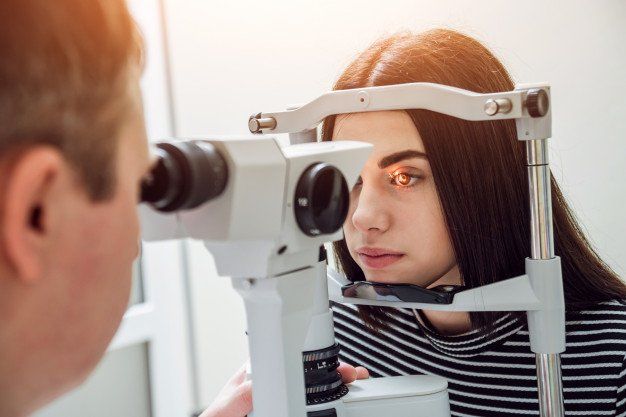Don’t See the World in the Dark

Don't See the World in the Dark
Glaucoma is commonly known as the sneak thief of sight as it causes irreversible blindness. With over 60 million people worldwide suffering from the same disease, it is very important to take necessary precautions before the disease gets out of hand. It is the leading cause of irreversible illness in the United States. Usually there are no symptoms that are noticeable in early stages. Most people are unaware of their diagnosis until it is too late. This month we would like to shed some light on Glaucoma Awareness.
What is Glaucoma?
Glaucoma is a group of eye diseases that cause blindness. It usually affects the middle-aged and the elderly. The vision loss is caused by damage to the optic nerve which is responsible for carrying images to the brain for you to see. At the moment, there is no cure for glaucoma. Once it is diagnosed, surgery and medication can help low or prevent further vision loss. Early detection is vital to stopping the progress of the disease.
Types of Glaucoma
Primary Open Angle Glaucoma
Open-angle glaucoma, the most common form of glaucoma, accounting for at least 90% of all glaucoma cases:
- Is caused by the slow clogging of the drainage canals, resulting in increased eye pressure
- Has a wide and open angle between the iris and cornea
- Develops slowly and is a lifelong condition
- Has symptoms and damage that are not noticed.
“Open-angle” means that the angle where the iris meets the cornea is as wide and open as it should be. Open-angle glaucoma is also called primary or chronic glaucoma. It is the most common type of glaucoma, affecting about three million Americans.
Angle Closure Glaucoma
Angle-closure glaucoma, a less common form of glaucoma:
- Is caused by blocked drainage canals, resulting in a sudden rise in intraocular pressure
- Has a closed or narrow angle between the iris and cornea
- Develops very quickly
- Has symptoms and damage that are usually very noticeable
- Demands immediate medical attention.
It is also called acute glaucoma or narrow-angle glaucoma. Unlike open-angle glaucoma, angle-closure glaucoma is a result of the angle between the iris and cornea closing.
Prevention
Glaucoma is the second leading cause of blindness in the world. Usually there are virtually no symptoms. Vision loss begins with peripheral or side vision, so if you have glaucoma, you may not notice anything until significant vision is lost. The best way to protect your sight from glaucoma is to get a comprehensive eye examination. Then, if you have glaucoma, treatment can begin immediately. Remember to visit your eye doctor on a yearly basis to help prevent eye disease.
















